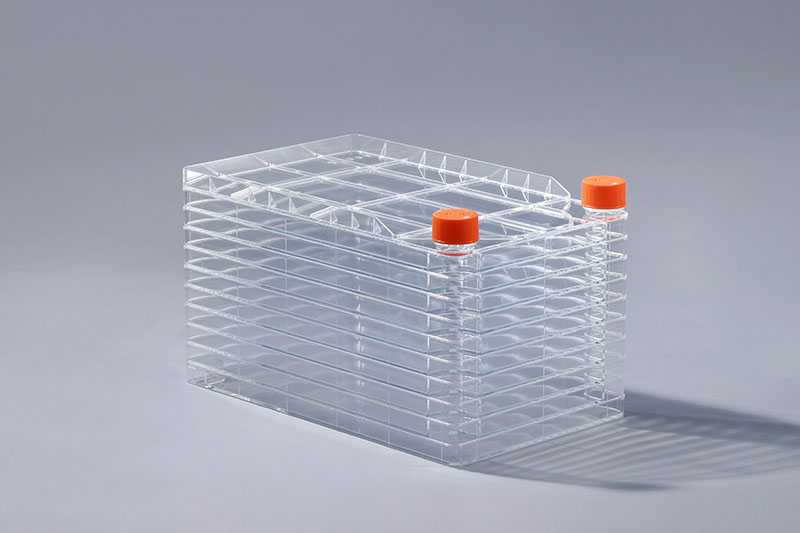In large-scale cell culture, cell factories are commonly used consumables, which are mainly used for the culture of adherent cells. Cell growth requires a variety of nutrients, so what are they?
1. Culture medium
The cell culture medium provides the cells in the cell factory with nutrients needed for growth, including carbohydrates, amino acids, inorganic salts, vitamins, etc. According to the nutritional needs of different cells, there are a variety of synthetic media to choose from, such as EBSS, Eagle, MEM, RPMll640, DMEM, etc.
2. Other additives
In addition to the basic nutrients provided by various synthetic media, other components, such as serum and factors, need to be added according to different cells and different culture purposes.
Serum provides important substances such as extracellular matrix, growth factors and transferrin, and fetal bovine serum is commonly used. The proportion of serum added should be determined according to different cells and different research purposes. 10%~20% serum can maintain the rapid growth and proliferation rate of cells, which is called growth medium; in order to maintain slow growth or immortality of cells, 2%~5% serum can be added, which is called maintenance medium.
Glutamine is an important nitrogen source for cell growth and plays an important role in the process of cell growth and metabolism. However, because glutamine is very unstable and easily degraded in solution, about 50% of glutamine can be decomposed after 7 days at 4°C. Amino amide needs to be added before use.
In general, various media and serum are used for cell culture, but in order to prevent cell contamination during the culture, a certain amount of antibiotics, such as penicillin, streptomycin, gentamicin, etc., are also added to the culture medium.
The FAI climbed 5.9 percent year-on-year in the first 11 months of 2018, quickening from the 5.7-percent growth in Jan-Oct, the National Bureau of Statistics (NBS) said Friday in an online statement.
The key indicator of investment, dubbed a major growth driver, hit the bottom in August and has since started to rebound steadily.
In the face of emerging economic challenges home and abroad, China has stepped up efforts to stabilize investment, in particular rolling out measures to motivate private investors and channel funds into infrastructure.
Friday's data showed private investment, accounting for more than 60 percent of the total FAI, expanded by a brisk 8.7 percent.
NBS spokesperson Mao Shengyong said funds into weak economic links registered rapid increases as investment in environmental protection and agriculture jumped 42 percent and 12.5 percent respectively, much faster than the average.
In breakdown, investment in high-tech and equipment manufacturing remained vigorous with 16.1-percent and 11.6-percent increases respectively in the first 11 months. Infrastructure investment gained 3.7 percent, staying flat. Investment in property development rose 9.7 percent, also unchanged.
 English
English



















































